Math is for Attackers
01/19/2024
The saying "math is for blockers" is generally not meant to be serious. It's usually a way of saying: "I think I should attack with everything, and I'm not 100% certain because the combat math is complex, but I'm too lazy to think more about it, so I'll just attack anyways and hope it works out."
Of course, if you're playing optimally, you should always be doing the math before you attack. In fact, you should often be thinking about future combats as well - not only taking into account how this combat will go, but also how your attacks this turn will affect your opponent's next turn, and yours the turn after that, and so on.
But all of this is quite a lot to think about, and you only have so much time and mental energy. So in order to truly be good at combat math, you must be able to parse it quickly and intuitively. Ideally, you wouldn't have to think too much about it, so that you can instead focus your energy on the broader strategy.
So, today I'm going to talk about all the nitty gritty details of combat math. I'll be focusing almost exclusively on the micro decisions, on questions like "how will this attack work out for me?", and less on bigger picture questions like "who's the beatdown?"
Part 1: Is This Lethal? - Calculating Max Damage
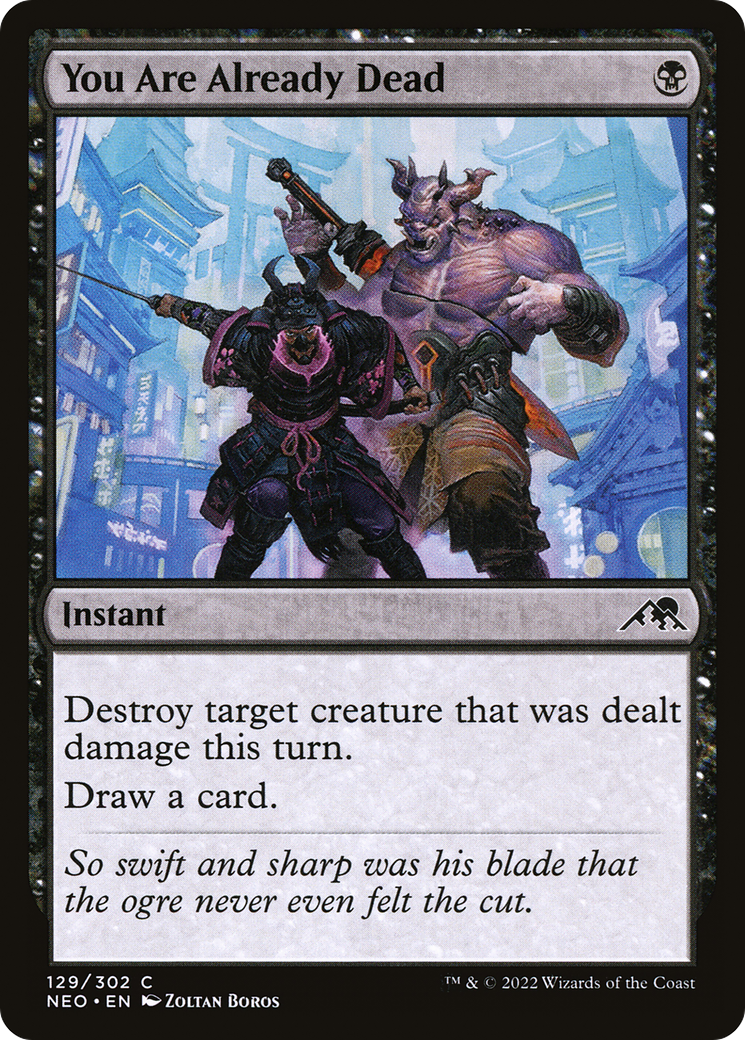
You Are Already Dead
Determining whether an attack is lethal is one of most important calculations in combat math. After all, the ultimate goal of all combat is to get your opponent dead.
But at the same time, it's also one of the simplest calculations, as evaluating if you have lethal this turn generally won't require considering that many possible future options. So, it's a great place to start.
The Basic Calculation
In the simplest case, where no creature have abilities, there's quite an easy shortcut. The attack that does the most damage will involve attacking with everything, and the block that saves the most life will involve blocking all the biggest things once.
So, you can simply count the difference between how many attackers you have and how many blockers they have, and then add up the damage from a number of your smallest attackers equal to that difference.
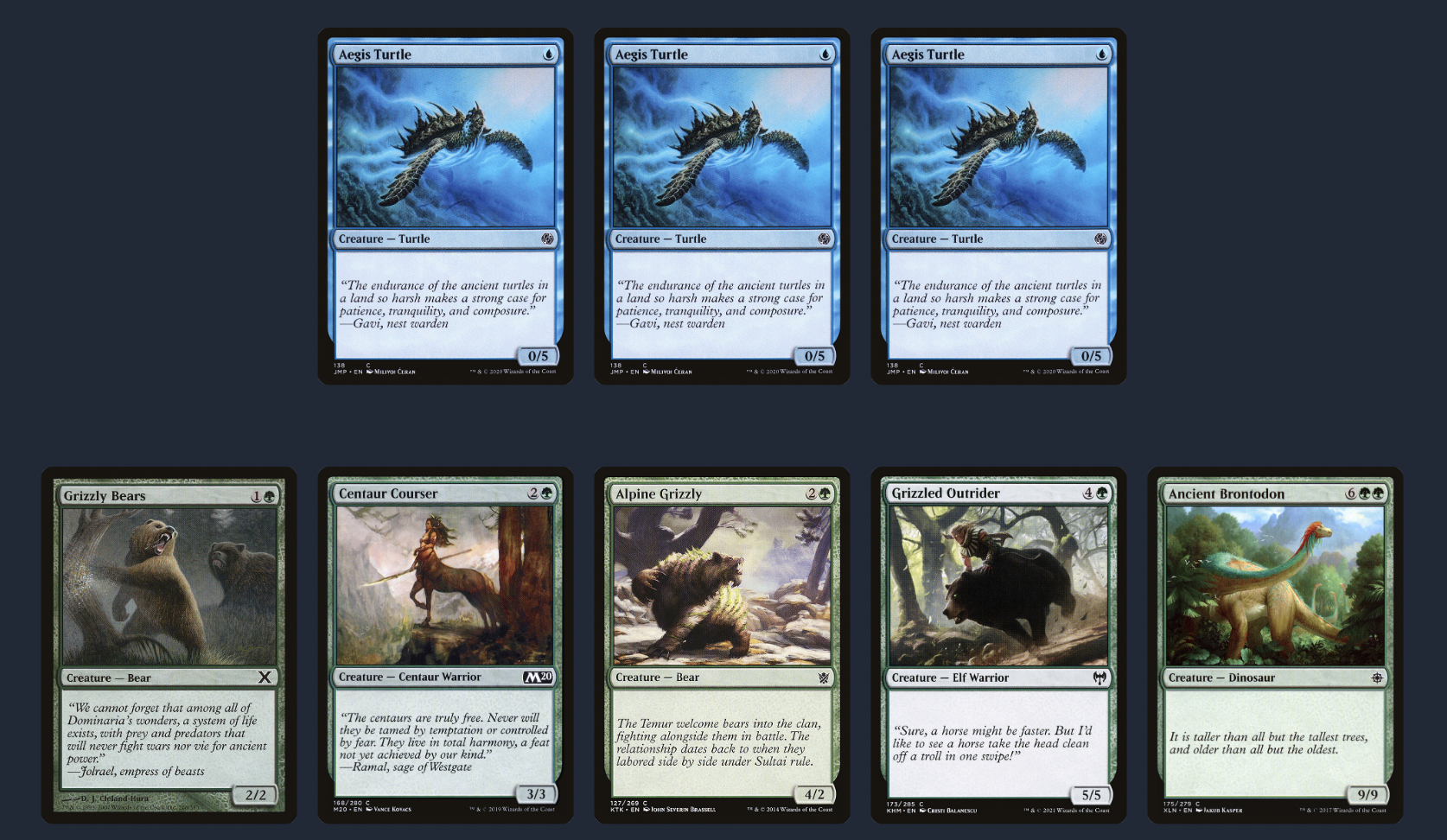
How much damage is this attack, maximum? A 2/2, 3/3, 4/2, 5/5, and 9/9 vs three 0/5s
As you start adding in more kinds of abilities, the calculation starts getting more complex. But we can still build off of that baseline calculation - the fundamental idea and question is just to ask: what's the most amount of damage each blocker can prevent?
In the simplest case, the answer is just "it can block the next biggest attacker". But as we'll see with various common abilities, that can change.
Menace and Other Evasion
Menace creatures are pretty simple - two blockers could choose to block two non-menacing creatures, or they could choose to team up and double block the menace creature. So double blocking a 5 power menace creature is more effective than blocking two 2 power creatures, but worse than blocking two 3 power creatures. If you go through and line up possible blocks one-by-one, it's pretty easy to see at which points blocking the menace creature becomes better.
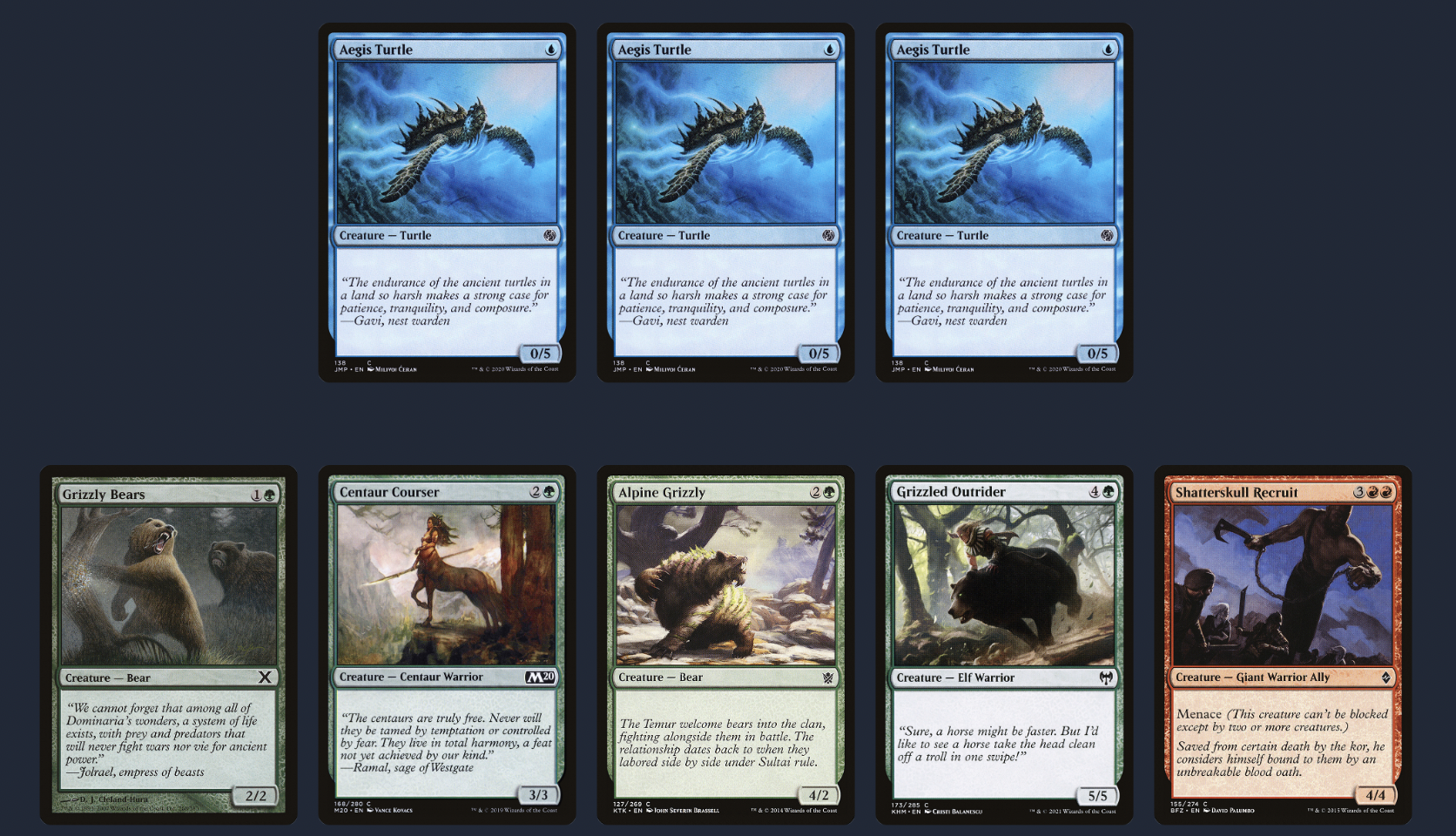
How much damage is this attack, maximum? A 2/2, 3/3, 4/2, 5/5, and 4/4 menace vs three 0/5s
Other forms of evasion work fairly similarly - they just restrict how your opponent can block, and you can generally just take that into account as you line up possible blocks.
Trample
Trample is a bit more complicated. Up until now, we've been assuming that every blocker does the same thing when it comes to maximally preventing damage, but trample makes you care about toughness. Still, it's not that hard to factor in using the same method.

How much damage is this attack, maximum? A 3/3, 5/5, and 6/6 trample vs two 0/5s
Putting it All Together
Some blocking situations can get quite complex - there's even been an academic paper written about how complex theoretical blocking situations can get in Magic. But you're never going to get anything all that complex in an actual game of Magic. You should always be able to easily figure out how much damage an attack can do at most, and therefore whether it's lethal.

How much damage is this attack, maximum? A 5/4 m3nace, 5/4 menace, 6/6 trample, 3/2 flier, and four 1/1s; vs a 4/5 reach, two 2/2s, and a 1/1.
Part 2: Blocking, Not Chumping
Of course, so far we've been talking only about blocking in ways that save the most damage - as that's what's important when you're trying to figure out what the maximum amount of damage an attack can do is. But in reality, most of the time people will not in fact chump, unless they're about to die. So how do you figure out how/whether you should attack when it's not lethal?
Chump Attacking
Similar to how you usually shouldn't chump block unless you're about to die, you also generally shouldn't chump attack unless your opponent is about to die; this is pretty common sense, and most people will default to never chump attacking unless it's lethal. Throwing away creatures that can represent damage/value over time for immediate damage is dangerous.
But I think people also often overlook when you should be chump attacking - at some point the immediate damage is enough pressure that it's worth it.
Two-Turn Lethal
The first thing to check is to just simulate a couple turns into the future - if you attack with everything this turn AND next turn, is that lethal? What if you do it three turns in a row? One of the main problems with chump attacking is that it makes your future attacks worse as more of your creatures die, but sometimes this is still fine - keep track of how many creatures you would expect to die on each attack, and see if the next attack might still be enough to finish the job.
Of course, you don't know exactly what your opponent will do, and that might mess with your calculations. If they're low on cards or mana, maybe assume that they're play 1 creature or 1 removal spell - if they still have plenty of cards and mana, maybe assume they can double spell. The nice thing is that, if you're attacking with everything, most of their spells will simply answer your next biggest thing, so it's not too hard to predict.

On this board state (a 3/2 flier and four 1/1s vs a 4/5 reach), you could probably expect to kill in two turns if they're at 6 (4 damage this turn losing the 3/2, then 2 damage next turn losing two 1/1s if they play another blocker, then you'd have trouble getting through after that). You can pretty consistently kill them from 5, nd you might even want to go for it if they're at 7 with no cards in hand. But if they're at 8 life, suddenly any second blocker will stop them from dying.
Trading Creatures for Damage
Of course, another very useful way to look at these situations is to think about what exactly you're trading away - what creatures are you losing, and how much more damage are you getting?
After all, at the end of the day creatures just represent sources of damage and ways to prevent your opponent from damaging you. If throwing away a single 1/1 is pushing 4 or more damage, maybe that's just worth more than the future value the 1/1 would represent anyways!
There isn't a clean metric for when an amount of damage is worth more than a creature. Generally getting something like 3x as much damage as the power you're losing is decent, but if that doesn't get your opponent that close to death and means you won't have any more good attacks for the rest of the game, maybe you should instead wait for a removal spell.
Playing it Patient
Ther's one last very important thing to always be thinking about when you're considering chump attacks: does waiting benefit me more than chump attacking?
In some scenarios, the answer is that waiting will only let your opponent build up more blockers while you run out of gas. If your opponent has a bunch of cards in hand and you're empty-handed, that might be a sign that you need to try to end the game quickly before they can stabilize.
But in other scenarios, maybe you have a card you can hope to draw that's more likely than having your chump attacks somehow work out. Maybe a falter effect like
Hazardous Blast, or a bomb that will take over the game like Bonehoard Dracosaur.On the other hand, maybe you and your opponent are both out of gas, and it's not clear that their defenses are getting that much better as time goes on. Maybe then you can elect to wait at least 1 or 2 turns to see if you can draw a removal spell or more pressure, if your chump attacks aren't quite worth it yet.
And of course, all this time I've mostly been talking from the attacker's point of view. But maybe you actually would rather not attack because you're the one favored in the long-game. This is something that gets more into macro concepts like "who's the beatdown", but it's an important thing that factors down into micro decisions as well.
Part 3: Cracking Back
Speaking of talking from the attacker's point of view: we haven't even considered what happens when the opponent attacks yet! And that's another very important dimension to consider when deciding whether to attack: are you fine with the crack back?
Racing Clocks
When you're getting into a race, it's important to consider what each player's clock is. At the rate that damage is being done, how long does it take you to kill your opponent, and how long does it take them to kill you? Who wins the race?
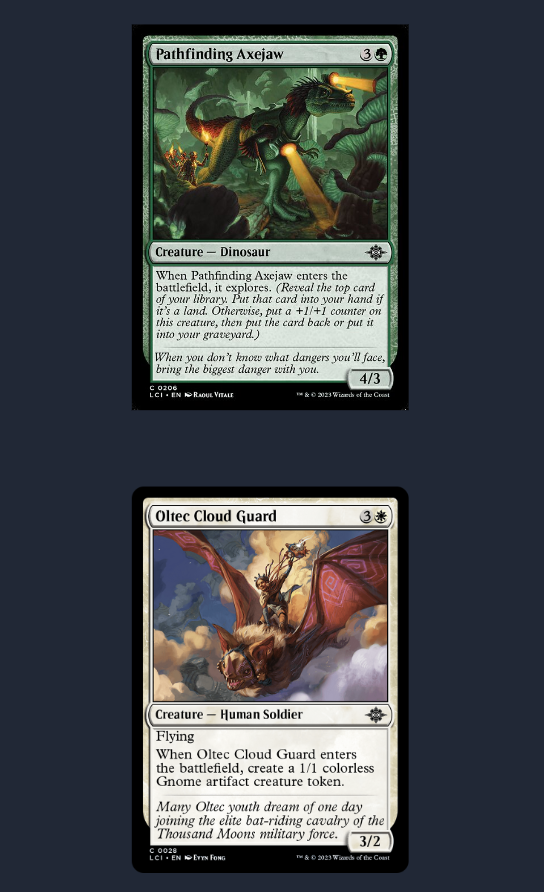
A simple example where you can decide whether or not to race. You can choose to attack for 3 for your flier, opening up their attack for 4 on the ground. If they're at 6 and you're at 20, this is obviously quite good for you; but if you're both at 8 then things get sketchy.
Of course, often there will be other factors to consider. You never know exactly what the future will hold, so it's possible that various cards that you or your opponent draw could drastically change the clocks. If you're an aggro deck, for example, there's a good chance you're playing a bunch of cards that push extra damage, which incentivizes you to race more.
Trading, and Trading Damage
The hardest decisions to make are often the ones early in the game, as you have the least knowledge of how the rest of the game will play out. Do you attack with your 2 drop and offer the trade with their 2 drop? If they attack you, do you block? Do you want to trade 2 damage for 3 damage?
In these spots you'll have to make some real choices about how you see the rest of the game play out; these decisions are a lot more strategic than they are tactical. It's very important to consider both how your hand plays out, and how your whole deck plays out. How will trading off creatures now affect your plays in the next few turns? If you start racing, can your hand keep applying pressure effectively to win the race? Do you want to end the game, or prolong it?
Holding Back
The concept of deciding whether or not to trade damage comes up a lot later in the game as well - sometimes you'll have the option of whether or not to attack with a larger creature that's holding back several of your opponent's creatures. In these situations, it's important to figure out exactly how much damage your creature is holding back, and whether it's worth it to trade that damage for being able to attack with your creature.
Often you can choose to hold back 1-2 of your larger creatures to discourage your opponnent's attacks, while attacking with smaller creatures that still have good attacks. You don't always have to attack with everything; be cognizant of the what each attack gains, and what it costs.
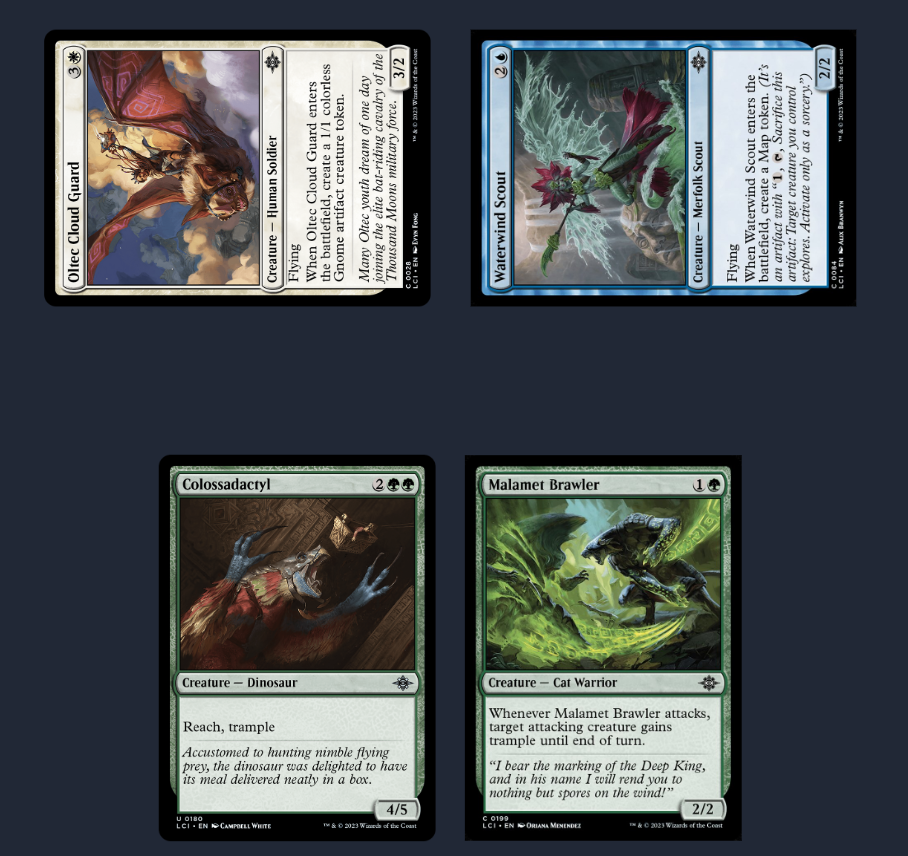
Here, you can choose to either attack with both creatures for 6 damage, or just attack for 2 while being able to block their 5 power of flyers. The question is then roughly: do you want to trade 4 damage for 5 damage? What if you consider that they could remove your 4/5?
Putting it All Together
There's a lot of factors that go into figuring out whether you should attack. You can start from checking for lethal, and extend things from there: figuring out how various attacks and blocks work towards killing your opponent and keeping you alive; figuring out whether trading damage is more favorable for your clock or theirs; and figuring out how trading off creatures affects the game going forwards.
Board states can get quite complex, with many many things to consider - and you can't always take forever analyzing attacks. When people say "math is for blockers", it's usually because they've given up on being able to figure out the correct line in a reasonable timeframe. So to avoid this, it's important to train your skills to be able to quickly work through things when it matters.
As always, I would recommend deliberate practice. Reviewing gameplay logs and going through each combat decision slowly and in-detail really helps train your brain to parse things instinctively. If, while playing a game, you run into a board state that you find too complex, maybe note that down so that you can go back later and think through it in detail in review.
It's okay to leave math up to the blockers, but you should do the math eventually.
#FreePalestine | Consider donating to UNWRA or PCRF, supporting protesters locally, and educating yourself.
